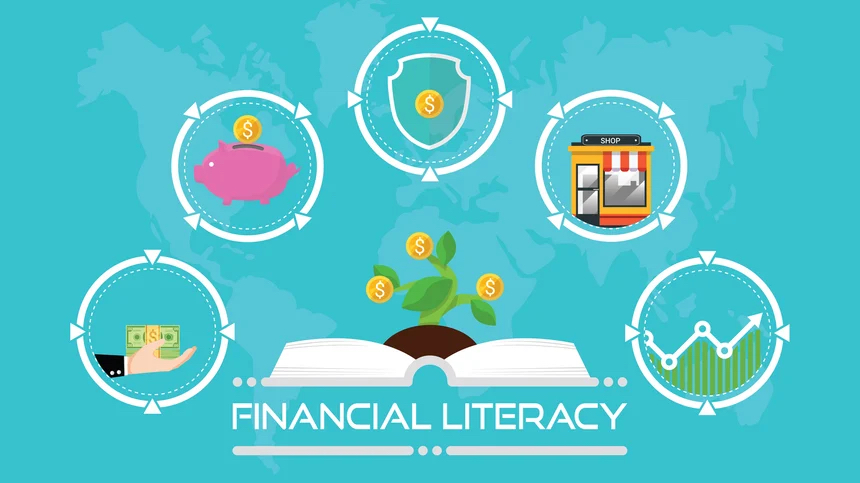If you're a homeowner looking for a convenient way to access funds, you might consider tapping into your home’s equity. One great way to do this is by opening a home equity line of credit, or a HELOC.
A HELOC is a revolving credit line you can use in a wide range of ways, whether you want to make improvements on your Utah home or get out of state on a dream vacation. So let’s take a closer look at this popular financial tool and get complete answers to your question, What is a home equity line of credit?
Here's what we'll cover in our handy guide to HELOCs:
- What is home equity?
- What is a HELOC?
- How does a HELOC work?
- Why should I consider a HELOC?
- How much can I borrow with a HELOC?
- How to qualify for a HELOC.
WHAT IS HOME EQUITY?
Home equity is how much you own of your home. You can work out how much equity you have by subtracting your current mortgage balance, and any other liens on your home, from its current market value.
For example: $300,000 current market value of home - $175,000 current mortgage balance = $125,000 home equity.
WHAT IS A HELOC?
A home equity line of credit, or HELOC, is a revolving line of credit that lets you borrow against the equity in your home. The HELOC uses your home as collateral and is like a second mortgage. If you own your home free and clear, the HELOC will be your primary mortgage.
HOW DOES A HELOC WORK?
You withdraw funds (aka “draws” or “advances”) from the HELOC during a set amount of time that is known as the “draw period.” Generally, this lasts 10 years. You can withdraw funds as needed during that time.
There is a set limit to the amount of funds you can borrow, but you don't have to borrow all the funds at once. It is not a lump sum payment. Instead, it works more like a credit card. This allows for more freedom than a loan and is especially beneficial if you don’t know exactly how much money you’ll ultimately need to fund your venture or project.
ARE THERE ANY RESTRICTIONS ON WITHDRAWALS?
Some lenders place restrictions on HELOCs and require you to withdraw a minimum amount of money each time you make a draw, regardless of need. You may need to keep a certain amount of money outstanding while your HELOC is open, or you may need to withdraw a specific sum when the HELOC is first established.
HOW DO I REPAY MY HELOC FUNDS?
Repayment of HELOCs varies but is usually very flexible. Many lenders collect interest-only payments during the draw period, and principal payments can be optional. Others require ongoing monthly payments toward both principal and interest.
When the draw period ends, some lenders will allow you to renew the credit line and continue withdrawing money. Other lenders require borrowers to pay back the entire balance due, also known as a “balloon payment.”
Alternatively, you may be able to pay back the outstanding balance of your HELOC in monthly installments over another set amount of time, known as the “repayment period.” Repayment periods are generous, lasting as long as 20 years.
ARE HELOC RATES FIXED OR VARIABLE?
HELOCs have variable interest rates, which means the interest on the loan can fluctuate over the life of the loan, sometimes dramatically. This variable is based on a publicly available index, such as the U.S. Treasury Bill rate, and will rise or fall along with this index. Lenders will also add a margin of a few percentage points to generate revenue.
WHY SHOULD I CONSIDER A HELOC?
Now that we've got a few answers to your first question – what is a home equity line of credit – we can turn to why you might choose to get one. A HELOC can be a great way to access extra funds from your home equity and help you achieve your goals.
In contrast to your original mortgage, A HELOC allows you to borrow money as needed, rather than all at once. This can be an especially helpful way to get funds if you’re looking to pay for ongoing tuition, multiple vacations, or even for a project where you may not know your budget or need to make payments over time instead of all at once.
In addition, current economic uncertainty makes it a great time to have extra cash available for any need that may arise.
HOW CAN I USE MY HELOC FUNDS?
You may spend your HELOC money in a wide range of ways, including:
- Home renovations, remodeling, or repairs
- Debt consolidation of high-interest credit cards and more
- Wedding or another significant family event
- Adoption
- Dream vacation
- Launch of a new business
Note that the interest you pay on your HELOC may be tax deductible if you use the funds to substantially improve your home. So it's a good idea to make separate draws on your funds for different purposes and keep good records.
WHAT ARE THE DISADVANTAGES OF A HELOC?
You may be wondering about any potential risks associated with a HELOC. Because the line of credit is secured by your home, the biggest risk is that failure to make payments may mean you lose your home through foreclosure.
Before opening a HELOC, it’s a good idea to run the numbers to get an idea of what your monthly payments will look like and whether you can easily afford to meet them.
Also, many lenders require the full payment of the HELOC after the draw period is over. This can prove to be challenging for many borrowers.
Finally, if you don’t plan to stay in your home for long, a HELOC may not be the right choice for you. When you sell your home, you’ll need to pay off the full balance of the HELOC. You may also need to pay a cancellation fee to the lender.
WHAT OTHER OPTIONS ARE THERE?
If you’re looking for a way to access extra funds, a HELOC may be the best fit for you, especially when it comes to flexibility. However, there are other options to compare and consider when looking for the best loan option for your needs.
You may want to consider:
- A cash-out refinance means you take out a whole new mortgage and pay off your existing mortgage, but likely need to pay higher closing costs than for a HELOC.
- A home equity loan gives you a lump sum of cash and then you make equal monthly payments with a fixed interest rate until you've paid off your loan amount in full.
HOW MUCH CAN I BORROW WITH A HELOC?
You need to have equity in your home if you want to open a HELOC and the amount of equity you have determines how much you can borrow.
HELOC credit limit amounts vary along with these three criteria:
- The current market value of your home
- The percentage of your equity that your lender allows you to borrow against
- The outstanding amount on your existing mortgage
To illustrate: If you have a $300,000 home with a mortgage balance of $175,000 and your lender allows you to borrow against 85% of your home’s value, multiply your home’s value by 85%, or 0.85. This will give you $255,000.
Now, subtract the amount you still owe on your mortgage ($175,000), and you’ll have the maximum amount you can borrow using a HELOC, which is $80,000.
WHAT IS THE HELOC APPLICATION PROCESS?
Once you’ve decided that a HELOC is right for you, the next step is to choose a lender and submit an application. The underwriting process may take a little bit of time as the lender reviews your application, especially if you need an appraisal done on the home.
For the application, you may need to provide:
- Personal information and ID
- Documentation for the past two years of income
- Proof of your home insurance
- Either mortgage documents or proof of homeownership.
Make sure that you ask your lender any questions you may have and that you understand the conditions of the loan before signing. For example, find out if there is an application fee or an annual fee.
NEXT STEPS: HOW TO QUALIFY FOR A HELOC
Like every loan and line of credit, HELOCs have eligibility requirements, which help lenders determine your financial wellness and responsibility. Most importantly, you must have a minimal amount of equity in the home.
Lender requirements vary, but most homeowners will be eligible for a HELOC with a:
- Debt-to-income ratio that is 40% or less – this shows how much debt you currently have in comparison to your income.
- Credit score of 620 or higher with a good repayment history.
- Home assessment that stands at a minimum of 15% more than what is owed
Wasatch Peaks offers HELOCs with favorable rates, flexible terms, and generous eligibility requirements. You can easily become a member if you live, work, worship, or attend school in Weber, Morgan or Davis Counties, Utah. Click below for more details on HELOC qualifying criteria!
HELOC Requirements: Here's What You Need
Other HELOC resources:



